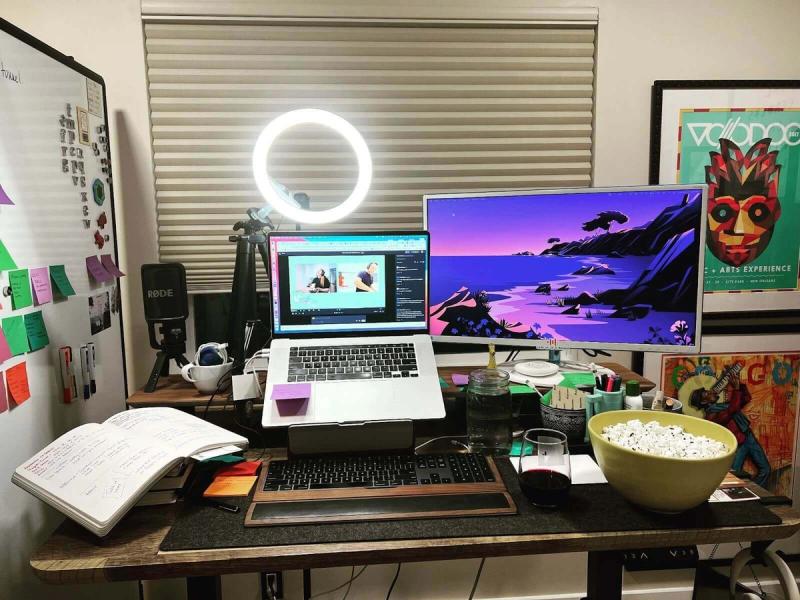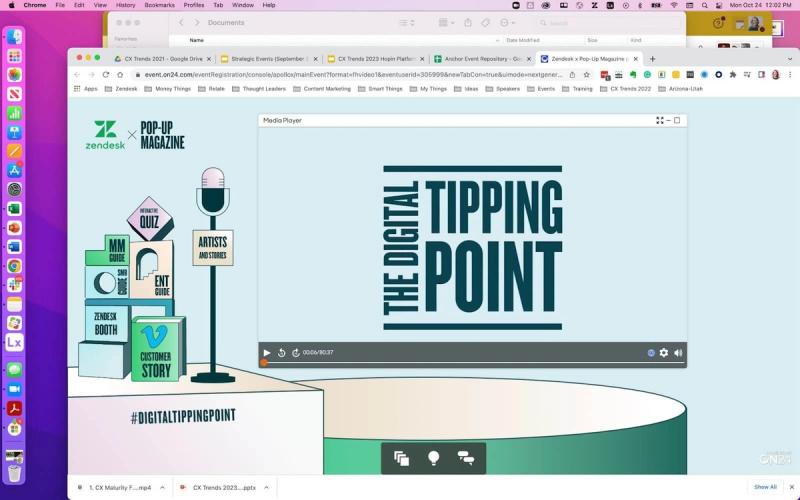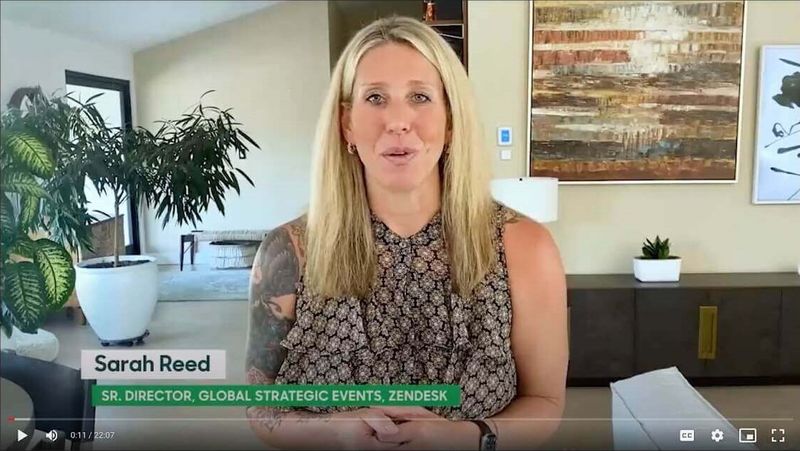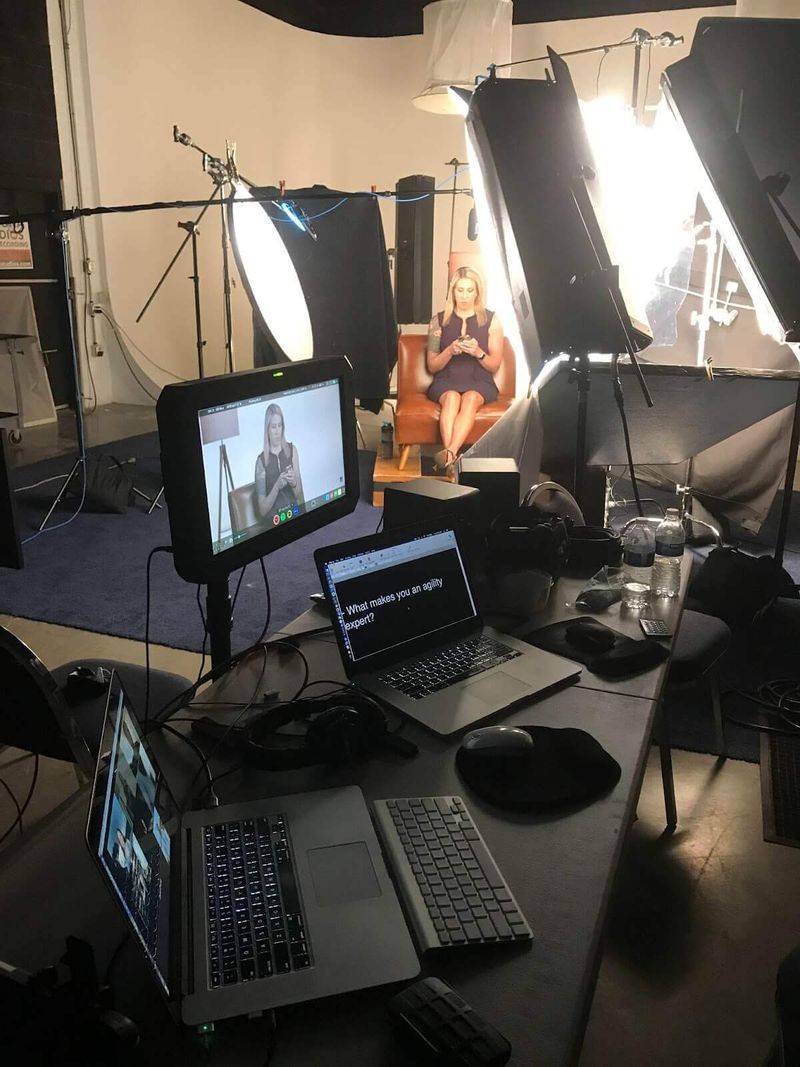The Digital Events Playbook That Made Events a Top Pipeline Generator at Zendesk

Maximize Your Marketing ROI
Join 10,000 other marketers already getting the best tips on running engaging events that boost pipeline and create raving fans.
It’s a Tuesday. I’m sitting at my desk with my eyes closed and my head in my hands. I’m thinking.
Last week we kicked off our quarterly marketing campaign events in North America. Then came Brazil and India. Last night was Asia Pacific. And at 2:00 am here in Phoenix, Europe will host theirs. Thanks to being digital-first, I can watch all events, either in real-time or on-demand the next morning.
Early data shows we’re trending well. Registrations are above target, attendance leveled off as expected, and event satisfaction is high. All our experiments–a downloadable digital workbook, live debate, and an “Ask the Experts” always-on session had solid engagement. And while we don’t yet know the attributed pipeline and bookings, all indicators are flashing green, green, green.
Yet, here I sit with my head in my hands.
The journey of digital-first
Going digital during the pandemic was a necessity. Staying digital-first in 2022 was a decision. I’d like to say that my crystal ball was glowing red and warned me of all there was yet to come–the war in Ukraine, global inflation, an economic downturn, tech layoffs, expensive and laborious travel, lingering COVID–but no. Our decision was based in part because of our own uncertainty and in part because of our digital success.
And that success continues, although with a lot more adjustment and recalibration. I’ll admit, event design and marketing are harder than they used to be.
The year that was: Q1
Looking back at our campaign events in 2021, we were riding high. Registration to attendee conversion was consistently above 50%, and attendee satisfaction was at an all-time high of 89% across the globe.
I get invited to a lot of virtual events, and this was by far the most valuable and relevant one I have seen in a long time. The whole experience was brilliant and well-rounded. It answered all the business questions in CX that are important right now.” - Zendesk Customer
We’d hit the ground running in Q1 with our annual research campaign, CX Trends. We kept the anchor events simple: mostly live customer panels with some pre-recorded content. This was intentional as we utilized a “follow the sun” model and clustered all global events around a single date. Focused. Impactful. A moment in time. Subsequent activities included smaller user groups, persona events, and virtual whiskey and wine tastings. Ah yes, remember all those drunken pandemic afternoons? All-in-all, a success.

Admittedly, we were heavily focused on vanity metrics at this point. “How many registrations? How many attendees? That’s a good conversion rate!” Goals crushed.
What worked:
- This was a true partnership across all our regional field teams. Everyone felt responsible for the success, and they didn’t throw competing events or activities that would cannibalize the overall campaign.
- Live Q&A was and remains a goldmine. Although we couldn’t yet pull attendees “on stage,” we did insert chat questions into all the live panels and audience engagement kept the content energized.
What I’d do differently:
- We did all the live components without a contingency plan. It was through sheer fortune that everyone had stable internet connections that day. I don’t recall being nervous, but watching the footage now makes me very angsty about an outage. Nowadays, our large-scale live events are fed through a virtual studio, and each speaker has an understudy on hand in case they lose quality video or audio.
- The simplicity of the event worked then but likely wouldn’t work so well today. We had over 13,000 attendees worldwide, and audiences of that size have differing needs and expectations. We’re now incorporating significantly more experiences and variations.
The year that was: Q2
In the second quarter of 2021, I wanted to give our audience something different. We’d had multiple back-to-back research events, and it was time to change up the energy. So we partnered with San Francisco-based Pop Up Magazine to create an experience that more closely emulated the “feel, think, act” model.
The Digital Tipping Point touched on the quarterly themes but never really talked about products. Instead, we discussed the importance of technology during the pandemic and how it influenced the way we communicate with loved ones, customer service, and each other. We recycled some existing Pop-Up stories (the hilarious tale of customers that call the 800# on the back of their liquor bottles or the moving piece about the impact purposeful closed captioning has on the hearing-impaired), had the narrators record them at home, and interjected them with interstitials from Zendesk executives and partners.

We also included an original about how Vimeo technology introduced the power of dance to people quarantined in their homes. “It isn’t healthy to go dark when the world goes dark,” the video begins. “It’s healthier to find the light.” The Vimeo video, like the entire event, acknowledged the fears and apprehension we all encountered during the pandemic and responded with care, optimism, and humor. And our audience responded in kind. Event satisfaction skyrocketed to 94% globally, with an unheard-of 99% in the EMEA market.
Zendesk and Pop Up Magazine did a great job of tying an emotional experience with interesting stories and their service. Gonna be hard to think about Zendesk without this now.” - Zendesk Customer
I wanted to say how wonderful this was. It gave me some great business inspiration but, most of all, a very unexpected emotional boost. Much needed in this time!” - Event Attendee
It was the break we all needed–Zendesk and our audience–and I’m grateful we recognized that.
What worked:
- The provocative nature of the content was intentional. There was profanity, there was an entire segment about over-drinking (no one did that during COVID), and there was talk about separation and loneliness. People laughed, and people shed tears. I don’t know that this event would have worked as well in 2022, but the point is it was right at the right time.
- Unlike the anchor events that preceded it, this one was largely pre-recorded. The musical score and the animations were as much part of the story as the narration, so we wanted to ensure they were highly produced. For each of the broadcasts, though, we ran a live panel that included the storytellers, Zendesk executives, and Pop-Up Magazine. We had a casual conversation with each other and fielded audience questions. It felt very cathartic.
- Partnerships like Pop-Up really matter. Not only were they an ideal creative partner, but they also marketed the event to their audience and helped drive registrations. I like to think we introduced a whole new audience to Zendesk (85% had not registered for the previous quarter’s event).
What I’d do differently:
- Because of the new audience, our prospect ratio was higher than customers, yet expansion was much greater than new business. We should have predicted that in order to offset in other ways so as not to impact quarterly pipeline and bookings targets.
- Speaking of predictions, we did a rough job with the goals of this campaign. While it was awesome to dramatically exceed targets (186% of pipe and 126% of bookings), we clearly were stabbing in the dark. But, we revised our modeling after this, which is good. And I’ve learned to better advocate for content and what I know to be true.
I wouldn’t do anything differently, but I’d be remiss not to say that not everyone appreciated the risk we took. We got more than a few, “I don’t understand what this has to do with CX.” Or, “what is this crap?” A good reminder that: you can’t please all the people all the time, so make sure your executives and teams are briefed and prepared.

The year that was: Q3 and Q4
The theme of the second half of the year? TOO MUCH CONTENT. Oof, I literally cringe when I look back at these event agendas, especially Q3’s Agility in Action. Not because we didn’t produce exceptional content but because we produced too much content that neither our regional partners nor our audience knew what to do with.
Somewhere along the way, a bright idea was born. Let’s modularize all our content. BRILLIANT. Let’s create multiple specialized content tracks. Less brilliant. Let’s build a masterclass library of lots and lots of on-demand content ranging from thought leadership to product demos, and everyone that went to the event or didn’t will want to watch and share all this content. Uh, no. Brilliant in theory (maybe). Way less brilliant in reality.
I should also mention that the aforementioned content was all pre-recorded so that we could have it localized for major languages and have it loaded into the content hub for immediate viewing after the event. Our poor small team spent months wrangling speaker schedules and video edits.

By Q4’s CX Maturity event, we knew to scale back on the on-demand content. (Audiences often saythat they want more on-demand, but they really want some options, not all the options.) But, we lost the battle with a stakeholder who insisted on a complex system of follow-on webinars targeting personas and segments. Once again, the “extra” content saw limited engagement.
I think the timing of the event with the webinar series could have been improved. Having multiple events led to lower registration numbers for each individually. There were too many competing things for the audience to consume.” - Zendesk Marketer
What worked:
- While the quantity of on-demand content was daunting, the main events were very well received. In AMER, our largest region, the events generated about 60% of the campaign’s pipeline and bookings for the quarters. We also saw a 55% conversion from registration to attendance and high CSAT (90%) and Q&A engagement (46%). Much of the success was due to more personalized sessions, interactive polls and assessments, regional-specific keynotes, and shorter content segments.
- The Events Team has traditionally enabled the regional marketers with an Event Kit–creative guidelines, demand gen elements, video assets, speaker recommendations, scripts, panel questions, digital console specs, etc.–but the Kit became far more customized during this time. We worked closely with Brand and the regions to ensure the Kit was applicable for internal teams as well as outside agencies. (Recently, we’ve added IRL event guidelines back in.)
- In Q3, we took our reporting and measurement up a few notches. Yes, we still track reg and attendance, pipeline and bookings, and satisfaction, but we’ve expanded our conversations to include event ROI, engagement, sentiment, behavior, and channel conversion. We look at everything event-by-event, region-by-region, and YOY/QOQ.
What I’d do differently:
- Because of the complexity and format of our 2H events, a couple of the regions started to pull back from their global support. One of our major regions chose to only marginally market their hosted event and instead focused on third-party activities. It was a risk that didn’t quite play out, and we came back with a lot of learnings.
- We also recognized too late in Q3, but realigned in Q4, that our audience preferences have changed. We either need a very short keynote and then go straight to breakout tracks or leave attendees in one robust linear path for the entirety of the event. Too much choice in a digital environment is overwhelming, and drop-off will rise considerably.
- Our masterclass idea? Well, if we were a media company with an intuitive on-demand content-management platform, this would likely have worked. But we’re not, so it didn’t. Lesson: play to your strengths.
The year of mixing it up
Back when 2022 was new, we recognized a few key things: big campaign events every quarter with all new content is too much, too much research is too much, and getting back together IRL en masse is too much.
How did we know? We asked. Sure, we pulled a lot of intel from our retro decks and post-event surveys, but we knew there was more to the story. So, in December 2021 and January 2022, we surveyed our event audiences. And what they told us helped shape our year ahead and gave us what we needed to mix it up and keep them engaged. (At least for another year.) But that is a tale for another day.

Transform Your Video Marketing with AI
Stay In Touch
Platform
Resources
© 2025 Copyright Goldcast, Inc. All rights reserved.





 Upcoming Events
Upcoming Events Event Series
Event Series On-Demand Events
On-Demand Events

